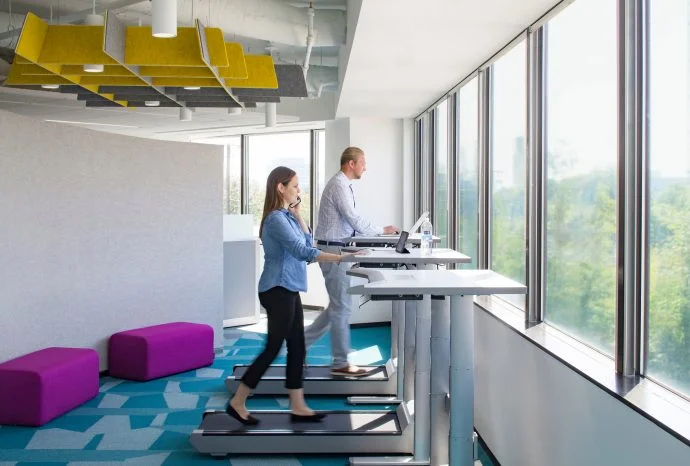As architects, designers, and workplace strategists, we’re always thinking about how to best design the interior work environment to fit occupant needs – and since we spend about 90 percent of our time indoors, we have an opportunity to benefit occupants through design and operations.
LEEDing the Way
LEED (Leadership in Energy and Environmental Design) has long been the basis of green design and energy efficiency in the US, encompassing design elements, building performance, and sustainable operations. However, with increased client interest in wellness and well-being, there is potential for buildings to address aspects of sustainability beyond energy efficiency.
LEED and comparable systems focus on aspects of the built environment, but until recently, few standards addressed the human impacts of design. The WELL building standard, first published in 2014[1], was the first major building certification and rating system to consider the built environment through the lens of human health. The system is now in use around the world, and encompasses ways to design, build and operate for the benefit of human occupants.
WELL is made up of seven concepts, each of which includes individual features that can shape a project. Some concepts, like Air and Water, address goals similar to those set out in LEED. Beyond energy efficiency and building performance, however, WELL builds on LEED’s goals to include concepts like Comfort and Mind, which target workplace aspects like acoustics, ergonomics, stress reduction, and mental health. Incorporating these considerations into design, construction, and operations can have measurable benefits on occupant health, and demonstrating a commitment to human well-being can positively impact an organization’s bottom line.

